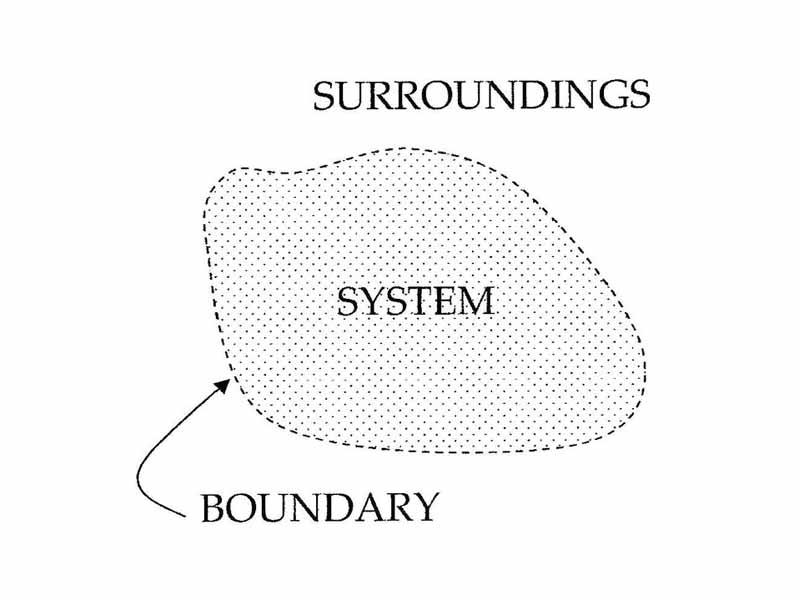Interdisciplinary Note (8 of 17)
Thermodynamics drives protein folding. Protein folding is spontaneous. It represents a free energy decrease. Everyone learns this, but what does it really mean? Free energy is the thermodynamic state function that keeps track of how a change in a system affects the entropy of the universe. When the free energy of a system is decreasing, that means the entropy of the universe is increasing. The change is irreversible, in other words, spontaneous. How does a state function of the system keep track of the universe? The free energy function keeps track of both the system's own entropy (ΔS) and it also keeps track of entropy changes to the surroundings due to heat flow (-ΔH/T). If the free energy change (ΔG = ΔH - TΔS) is negative, that means that the combination of these two factors is increasing the entropy of the universe (system + surroundings), and the change is spontaneous.
Where do you find free energy change in protein folding? Firstly, there is the enthalpy decrease. That's the easiest to see. As hydrogen bonds and salt bridges form, opposite charges close separation. This represents a decrease in electrostatic potential energy, a decrease of internal energy in thermodynamic terms. By the 1st law of thermodynamics, this internal energy decrease becomes heat flow into the surroundings. That heat flow is not going to turn around and unfold the protein again because it has brought entropy to the surroundings. This is why exothermic reactions tend to occur with negative free energy change (ΔG = ΔH - TΔS).
It''s a little trickier to see the change in entropy of the system (ΔS). At the basic level, it's easy to see that the folded protein is losing configurational entropy versus the random coil as it folds. The protein is becoming much more constrained in terms of its degrees of freedom. The bonds on each side of the central carbons of each residue (save proline) around which rotation is possible in the unfolded state have become constrained φ and ψ angles in the native state. This is an entropy decrease, an increase in order, that, in a sense, the heat flow into the surroundings is paying for.
Note that some proteins may maintain disordered subdomains in their native form. An important theme in protein folding dynamics are proteins with disordered binding domains in the native state. You will see this in some proteins with multiple binding partners such as calmodulin or NF-κB, where the binding domain does not become ordered until binding.
So as the protein folds, its enthalpy decreases, contributing to free energy decrease. However, its intrinsic entropy is decreasing too. The protein is becoming more orderly. This ordering of the protein, by itself, would be a free energy increase. For some proteins this is the way to see it. The enthalpy decrease as opposite charges come together in hydrogen bonds and salt bridges pays for the free energy increase in the ordering of the protein. However, for a great many globular proteins there is another important factor, which is the effect on the entropy of water in the hydration layer due to the retreat of hydrophobic residues into the center of the folded protein away from water. For AAMC, this is the kind of issue right on the edge of expected foreknowledge, a figure of merit on one of the half dozen genuinely sophisticated questions that can show up in the exam. Basically, when a hydrophobic residue is on the periphery of a protein, there are water molecules which are forced to be in contact with it. The water molecules don't direct their poles in the direction of the hydrophobic residue. To maximize hydrogen bonding, around the hydrophobic residue, the water molecules direct their poles laterally towards each other, forming a kind of cage around the residue. This imposes order on the water and is known as entropic penalty. Thus, when a protein folds and the hydrophobic residues retreat to the center, the water in the hydration layer increases in disorder. This aspect represents an increase in the entropy of the system, encouraging the protein to fold.
In summary, the loss of configurational freedom of the protein represents an entropy decrease (part of ΔS). The greater order of the folded protein is a thermodynamic obstacle working against folding. The gain of configurational freedom for the water in the hydration layer as hydrophobic residues retreat to the center of the folded protein is an entropy increase (another part of ΔS). This promotes the folding. The heat flow into the surroundings is an entropy increase too, but for the surroundings, and this also favors spontaneous folding. (This change in entropy of the surroundings, remember, is not ΔS. That's the change in the system's entropy. The change in entropy to the surroundings equals -ΔH/T. The surroundings gain entropy due to heat flow). The entropy change to the universe gathers both of these up as -ΔG/T, which equals -ΔH/T + ΔS (You can get this from the familiar formula ΔG = ΔH - TΔS) To say that the free energy change is negative for the protein to fold is equivalent to saying that the entropy of the universe is increasing as it folds. That's why it happens spontaneously (irreversibly).
